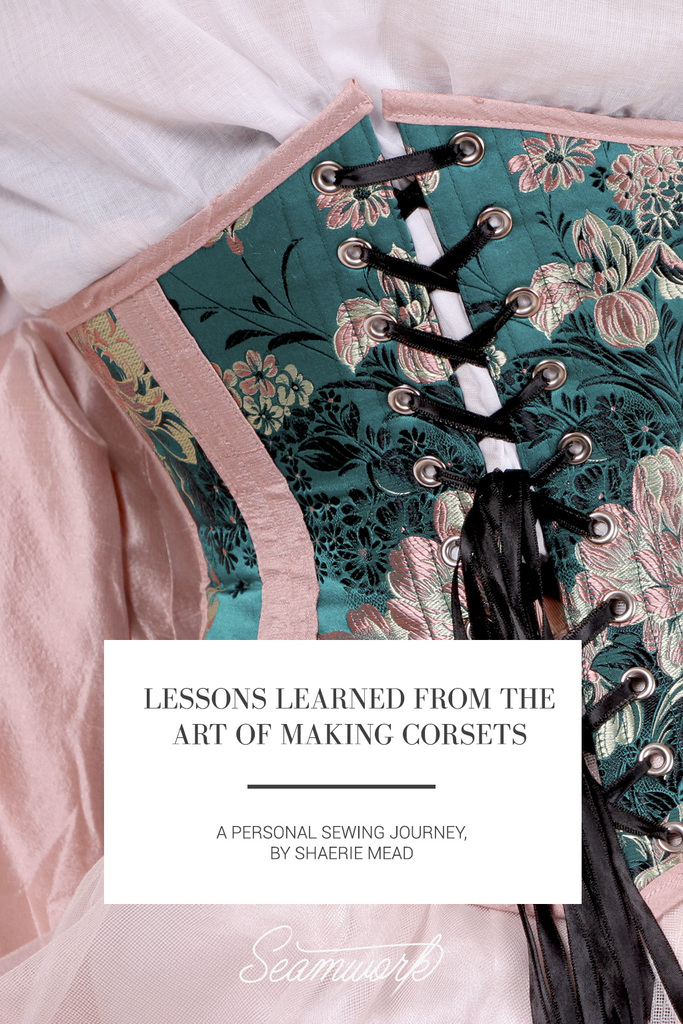I have been sewing my own clothes for most of my life, but it took a long time for me to sew well. By “well” I mean making garments that fit, out of appropriate and livable fabrics with a professional feel to them—clothes I would wear every day. Sewing well is a deeply personal journey for most, and some people are totally fine with never reaching this goal (I have met and taught them, and it was quite liberating).
Some people are lucky enough to have a family member who sews and who also has the patience to pass these skills along, but most of us grew up in a decidedly non-sewing family and were on our own figuring things out. Personally, I was always interested in clothes that you couldn’t find in the mall, so the natural progression from sewing Barbie clothes was to start sewing my own.
From middle school on, I blundered and bluffed my way through a world of fabric, patterns, and tools where everything seemed to be written in a foreign language. We still had home economics class, but the projects chosen for us would send even a proficient sewer running for the hills: canvas duffle bags (sewing circles, metal zippers, super-thick fabric, and strapping) or stuffed animals (tiny pieces, stretchy, FAKE FUR). I got really good at hand sewing because I couldn’t make the machine do what I wanted.
All through high school and college, I sewed clothes that looked okay and held together, but always suspected that I was missing something important.
It wasn’t until moving to Boston, Massachusetts in 1996 that I really began to look into the craft of sewing. I was lucky enough to stumble upon patternmaking classes at the Cambridge Center for Adult Education. I learned how to make a muslin and the basics of fitting, and how to make oaktag and paper patterns. All of this happened as I was getting more and more interested in costume and historical dress.
I designed and sewed corsets for myself and friends to go dancing in, and eventually started selling them in a few local shops. As my main job was in one of those shops, I got to see firsthand how they fit a large cross section of the corset-buying public, and this inspired my custom work.
My fledgling was named Lovely Creature Corsetry, and I kept it up through a relocation to Los Angeles, California until 2006. This work as a custom corsetière is the one single thing that helped take my sewing to a level where I was satisfied as a maker and a wearer! Here are a few things I learned along the way that changed my perspective and allowed my craft to grow. I’m going to share what I learned on my journey so, if you like, you can apply it to your own creations and process.
Quality materials and tools
My first few corsets were made out of the supplies I could find at JoAnn’s. Stiff and slippery poly taffeta and upholstery pleather were the only fabrics I worked with, and I knew nothing about interfacing or holding a structure. These early pieces were stiffened with cut-up coat hangers and channel quilting, and I wore them into the ground.
As I sewed more and more, the people who worked in the fabric shops in Boston (WinMil Fabrics and Van’s Fabrics especially) were able to point me towards more workable fabric, excellent quality woven interfacings, and sewing supplies that made a huge difference. I had been sewing with straight pins passed down from my mom (who was not a sewer). I clearly remember the difference getting new glass head pins made—it was night and day!
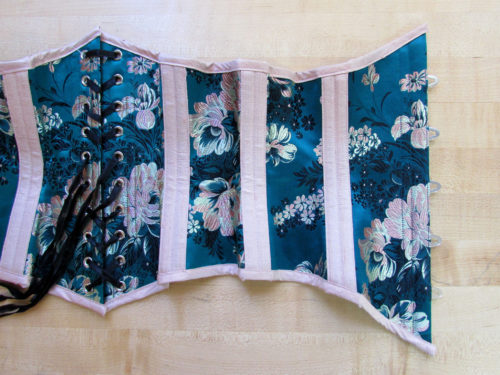
Thanks to a high school stint working at JoAnn’s, I already had an excellent pair of Ginghers, but my Singer from the same time period was starting to struggle with the layers of heavy fabric I was torturing it with. I saved up and put some holiday checks toward a floor model Bernina 1008 and never looked back. The upshot here is that this was the start of my obsession with tools that work and fabric that speaks to me, which is something that carries over into my work today.
Precision
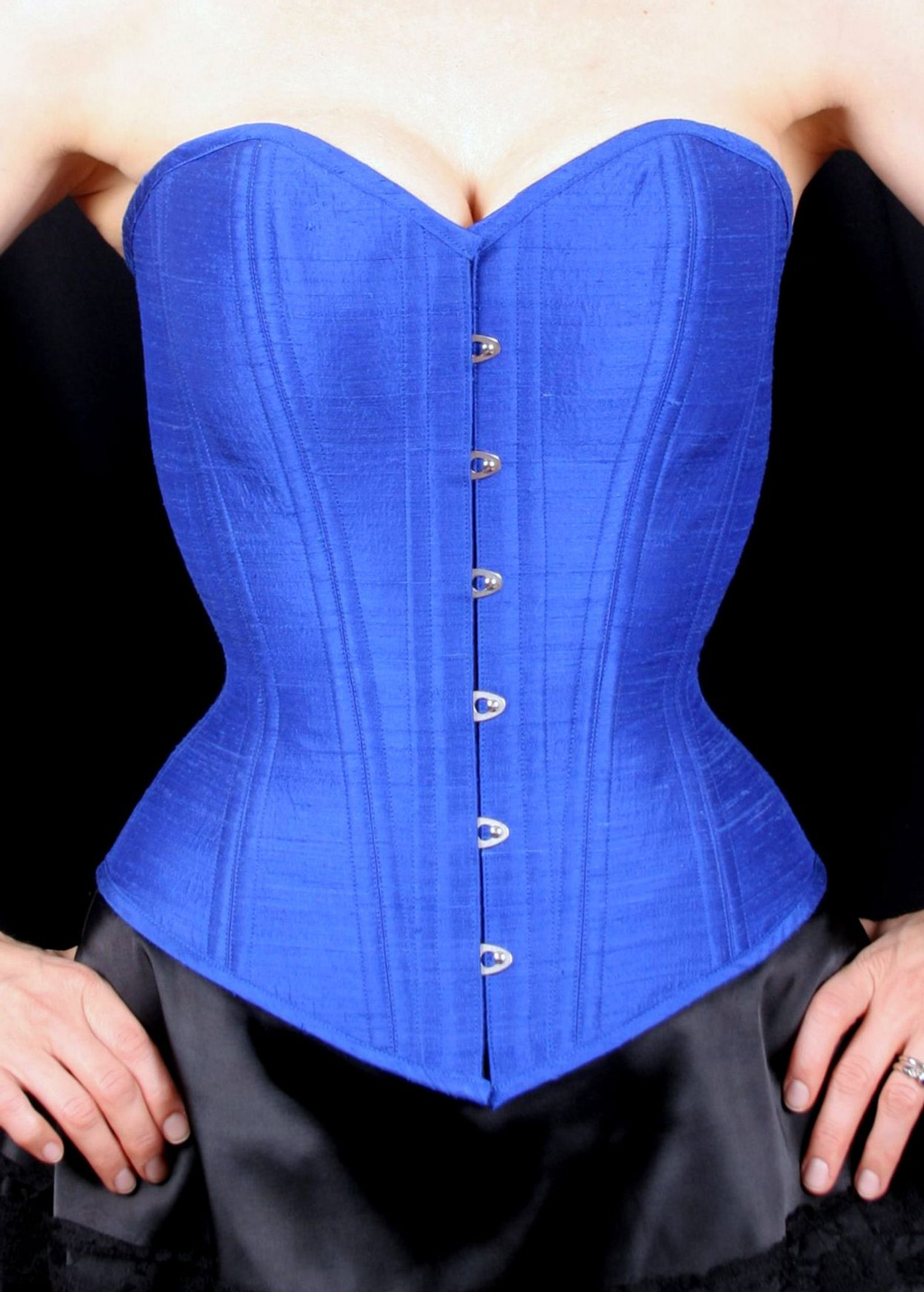
Before making corsets for a living, I was a pretty slapshot sewer at best. My only training growing up was a well-meaning aunt who looked at whatever I made and said, “you can do better than that.” I spent a decade sewing snaps in everything because I was afraid of zippers. Nothing ever matched, because I had no idea what to do with notches or how to ease or even how to pick the right fabric for my project. (These issues contributed to my desire to eventually teach sewing, so others didn’t have to go through such trauma!) All this is fine when you are sewing MC Hammer pants for yourself, but if someone is paying you hundreds of dollars to sew a garment with negative ease, you’d better shape up quick.
Seam allowances became the law, and as I was fitting and drafting my own patterns I couldn’t blame it on anyone else. The type of corset I made also had a lot of exposed stitching and topstitching, so I definitely learned to sew straight. Matching curves was another lesson. On a corset, only the center front and center back are straight lines. The rest of the seams are curves, and those curves usually do not match. It’s impossible to pin and stitch (especially with a 1/4” seam allowance), so I had to get used to matching the curves as I sewed. All corsets were finished with bias binding, and that was another skill to master. I did not have the time to sew many clothes for myself during this intense time period, but when I finally did, I remember thinking what a snap it was to sew a dress compared to the 18 hours it took to sew a corset!
As you pay more attention to precision, you’ll also realize that sewing has a lot of forgiveness built in. You really just need to know when to be precise (reverse corners) and when you can relax a little (winding a bobbin).
Patience
As a teacher, one thing that consistently surprised me was that most students expected to be instantly good at sewing. I heard over and over how their grandmothers could look at a dress in a shop then go home and copy it, or how their moms could sew anything—so it should be easy, right? These students took for granted that they would be able to sew entire dresses that fit perfectly within a few lessons. Of course, this is not usually the case! It takes a lot of practice to get the skills you need to sew the clothes you envision, and our modern culture is so completely focused on different skills.
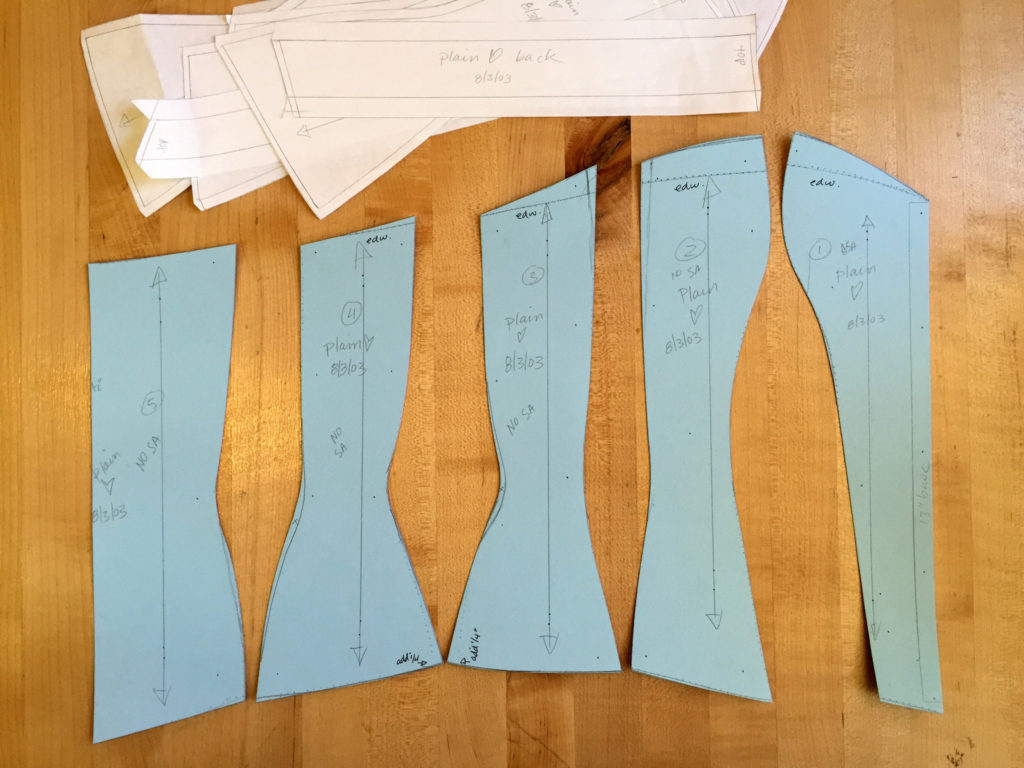
Many beginners are frustrated at beginner patterns: pillows, quilts, the ubiquitous pajama pants. We want style now! Deep breath: everyone starts somewhere. A great start is learning how to read pattern envelopes and familiarizing yourself with fabrics. Even if you dream of making silk jersey wrap dresses, your first step will most likely be learning to sew garments from cotton, a much more forgiving and stable fabric! Once you have made a garment successfully, make it several more times. This more than anything will build the muscle memory in your hands that is necessary for sewing.
Talk to friends who sew for beginner and intermediate project recommendations. Don’t be afraid to dive in and make a mess. Experimentation is what cheap fabric is for! Ask questions on social media forums and blogs. Most sewers online are happy to wax poetic about their work, and what they liked or disliked about the sewing process. You have an enormous and encouraging community to back you up! If you are lucky enough to live where you can take live classes, take advantage of it. Even one or two classes can offset years of frustration and wasted fabric.
Patience goes hand in hand with precision, and it’s another very personal thing. It took me years of being frustrated with things not coming out the way I envisioned them to pull back and take it step by step.
Fit
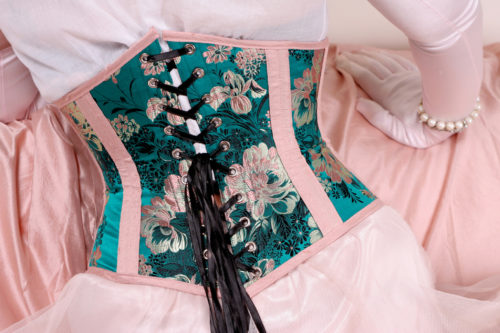
Any sewer must first understand construction before tackling fit. This can be frustrating because as you get better at construction and spend more time and money making clothes, of course you want them to fit! Learning how your body differs from the “standard” sizes is a life-long process, because your body changes all the time. But this is what we wrestle with, and you can either spend the time before you sew your actual fabric (patternmaking, test garments) or you can change existing garments (alterations). Usually people have a preferred method, and as a pattern maker I prefer doing the work beforehand.
There are some things I automatically do to almost any pattern before even cutting out my size: I select a medium in the shoulders, a large at the bust, and an extra large for the hips, and I blend between sizes. If the garment has a waistline, I shorten the bodice at least 1”, sometimes more in the back. On many garments, I do an adjustment for a swayback. All of this happens before I even make a muslin, because these are things I know from sewing for 30+ years. If you don’t have in-person sewing classes near you to help with fitting, find a friend to explore fit with. It’s nearly impossible to fit yourself, and in my opinion dress forms are a waste of money unless they are an exact replica of your body.
Body Issues
After struggling with my own body perception for most of my life, being a corset-maker made me realize that everyone has body issues. I have made corsets for anyone you can think of: burlesque performers, club kids, just plain folks, drag queens, people with back problems, brides, dancers (formal and exotic), women, men, and everyone in-between. The largest corset was for a woman with a 60” bust and the smallest was for a woman with a 28” bust; the latter was a ballet dancer who felt like she had curves for the first time instead of being straight up and down. A lot of my customers were looking for a solution to their body issues, and I can say with certainty that a corset will not solve anything. What it can do is make you feel fantastic about yourself and how you are presenting your body, if that’s your thing. Any well-fitted garment that suits you will do the same: generate confidence.
Teach yourself about your body and what flatters it. What is your personal style?
The Wardrobe Architect series on Colette’s blog is a fantastic tool for starting to suss this out. When I was making corsets, I was über gothic: I’m talking veils and capes and depressing lithographs in art class. That doesn’t suit my post-baby sewing teacher lifestyle these days, so I had to do some work to find a new style (still in progress, but there are definitely no corsets). I have a closet full of hand-made clothes that don’t fit anymore, and, like most people I know, I see-saw daily between wanting to lose weight and sewing for the body I have. Sewing for the body I have is my choice as a working mom! The only exercise I get these days is running around after a really fast 3 year old, and my diet is fish sticks and peanut butter sandwiches. We do whatever works.
I don’t think the issues with body image in our culture are going to change radically anytime soon. Nowadays at least, we try to balance feeling good about ourselves with some amount of sense, and hopefully soon our size charts will reflect what the “average” woman really looks like according to the latest studies: she’s 63.9” tall with a 40.7” bust, a 34.3” waist, and 43” hips (SizeUSA, 2007).
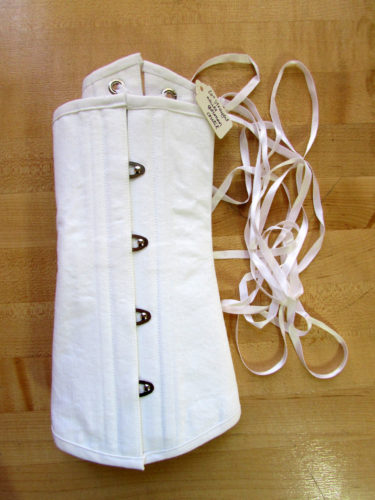
There are definitely many other things I learned while running small businesses. I could write a book with chapters such as “Obsessive Persistence in Research Pays Off,” “Defending Feminism as a Corset Maker,” and “A One-Person Manufacturing Business is Usually Not Sustainable.” And even though corsetry is a less common route, we all have a journey. Some are content to sew at a comfortable level if it gets the job done, but many want to improve their skills as they grow into what can be accomplished by today’s home sewer.
Sewing is a hard skill set. That means you have to educate yourself, and you have to practice. Almost anyone can become more professional if they want to devote the time to challenging themselves! Arm yourself with the right tools, pick the best quality supplies you can afford, practice precision, and above all be patient with your project and with yourself (still the hardest for me). Become one with your seam ripper! I certainly don’t think I will ever stop hungering for more information and ways to improve my sewing. In fact, I am currently back in school, completing a degree so I can teach at the college level, and I learn something useful and interesting every day from my professors and fellow students.


